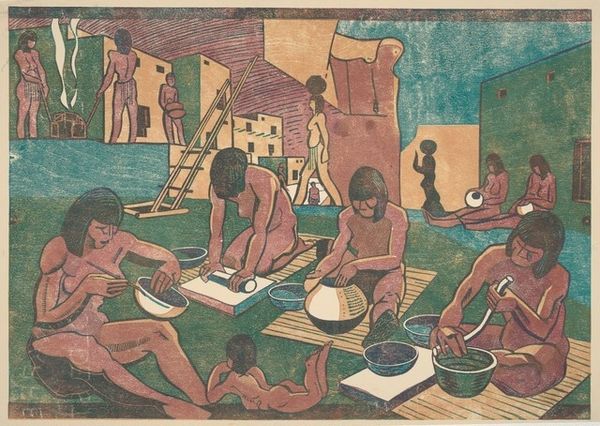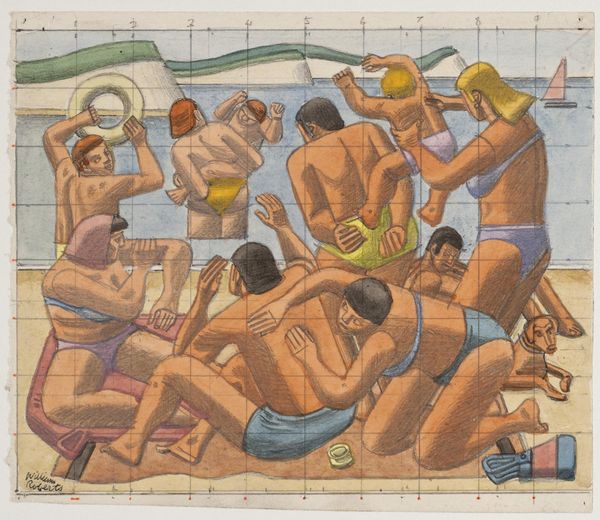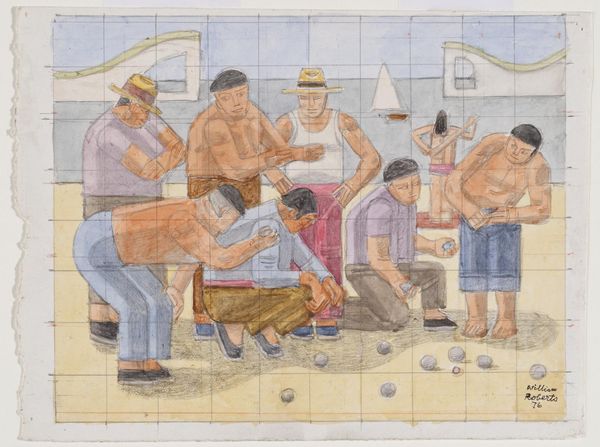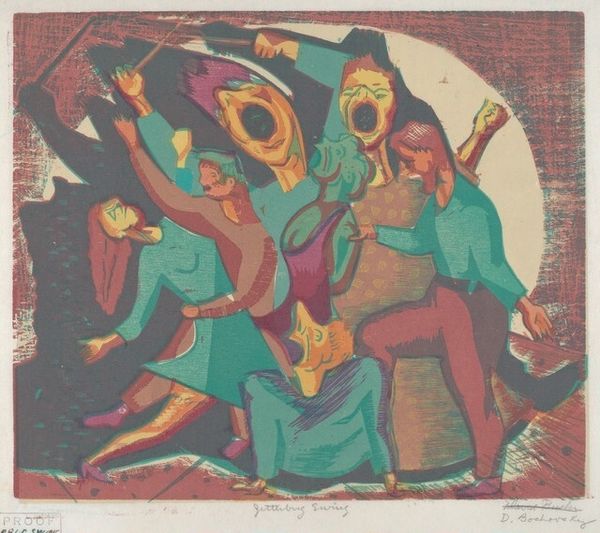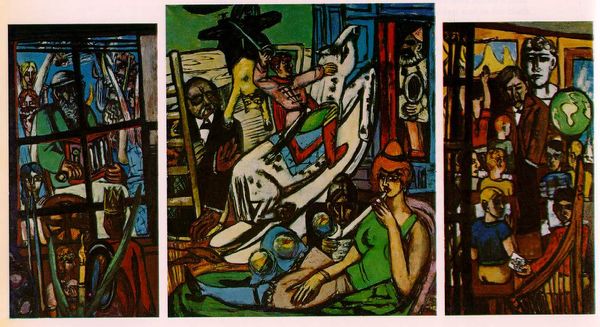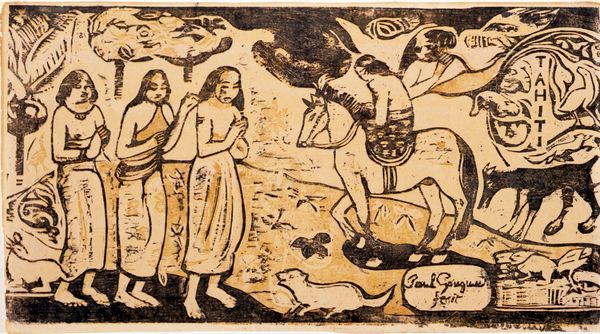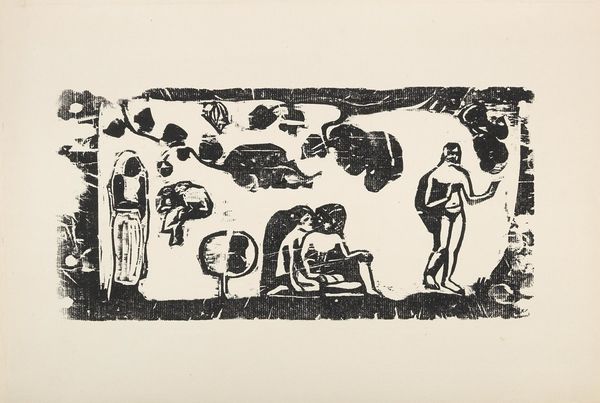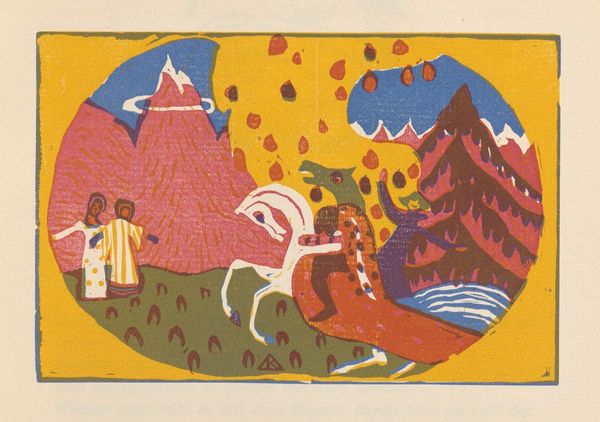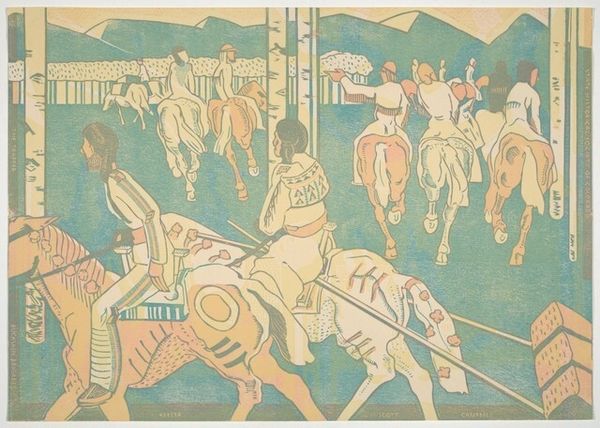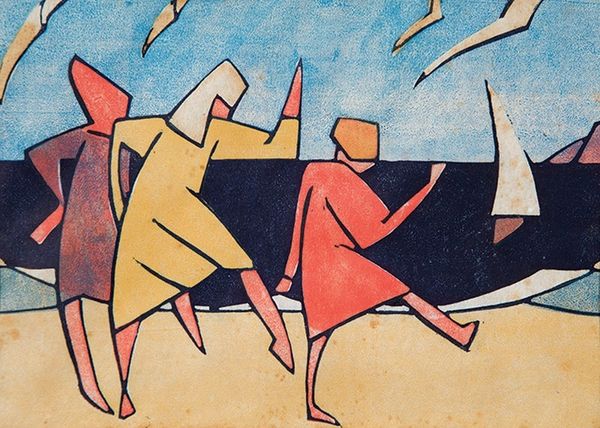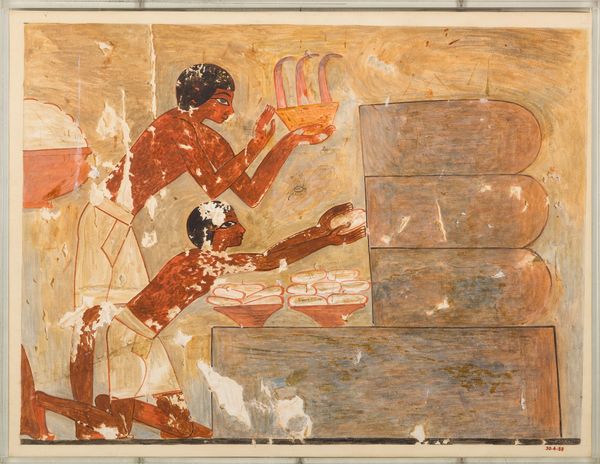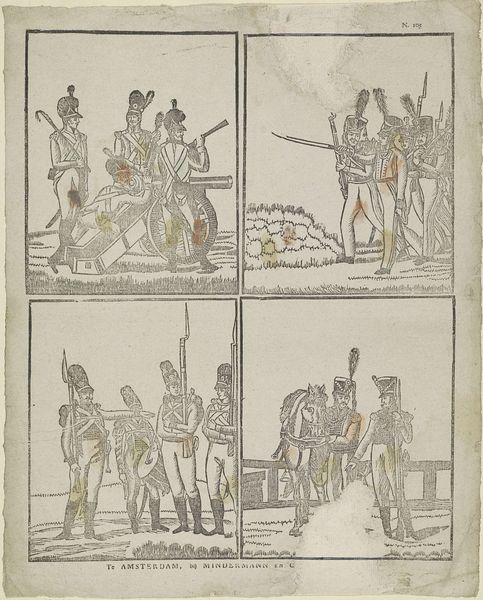
print, woodblock-print, woodcut
#
narrative-art
# print
#
figuration
#
woodblock-print
#
woodcut
Dimensions: Image: 305 x 407 mm
Copyright: National Gallery of Art: CC0 1.0
Curator: Harold Emerson Keeler's woodcut, "Building a Kiva," created around 1935, captures a scene of collaborative construction. The geometric style, typical of Regionalism, simplifies the forms and emphasizes the human figures and architectural structure. Editor: The print really leaps out because of its graphic intensity and the striking use of flattened planes of color. There is a kind of sturdy, raw energy emanating from the image, it is visually arresting. Curator: Yes, the process of woodcut lends itself so beautifully to this feel. I love how the printmaking technique honors the labor it depicts; you really get a sense of the energy poured into each carve, each brick, each collaborative gesture. It’s like an artifact itself, embodying the ethos of labor and community. Editor: That's an astute observation. It’s important to think about wood as a base material. Consider what a labor-intensive medium this is, cutting away at the block, demanding precision, creating that matrix... and the material presence of the print itself invites viewers to contemplate the connections between process, materials, and the final image, don’t you think? The way that the print captures light really makes it feel heavy too. Curator: Definitely. It feels as if he's honoring the labor, drawing on a palette which has emotional symbolism. Beyond that it almost invites us into an imaginative meditation on ancient cultural and communal practice. There's such a rich story being told, visually, about heritage and cooperation. Editor: Absolutely, and beyond just what's shown on the surface— it prompts one to consider the hands behind it, literally in its production as a print, as well as within the picture and its depiction of the many pairs of hands and bodies who build this edifice. I mean the wood, the tools… who made those? There's such a story to be unfolded behind the obvious one presented in the composition itself. Curator: In short, the piece captures the blend of physical labor, cultural tradition, and symbolic intent that the artist intended. Editor: I think this artwork successfully merges image and process together into something deeply evocative of indigenous labor and community building practices.
Comments
No comments
Be the first to comment and join the conversation on the ultimate creative platform.
